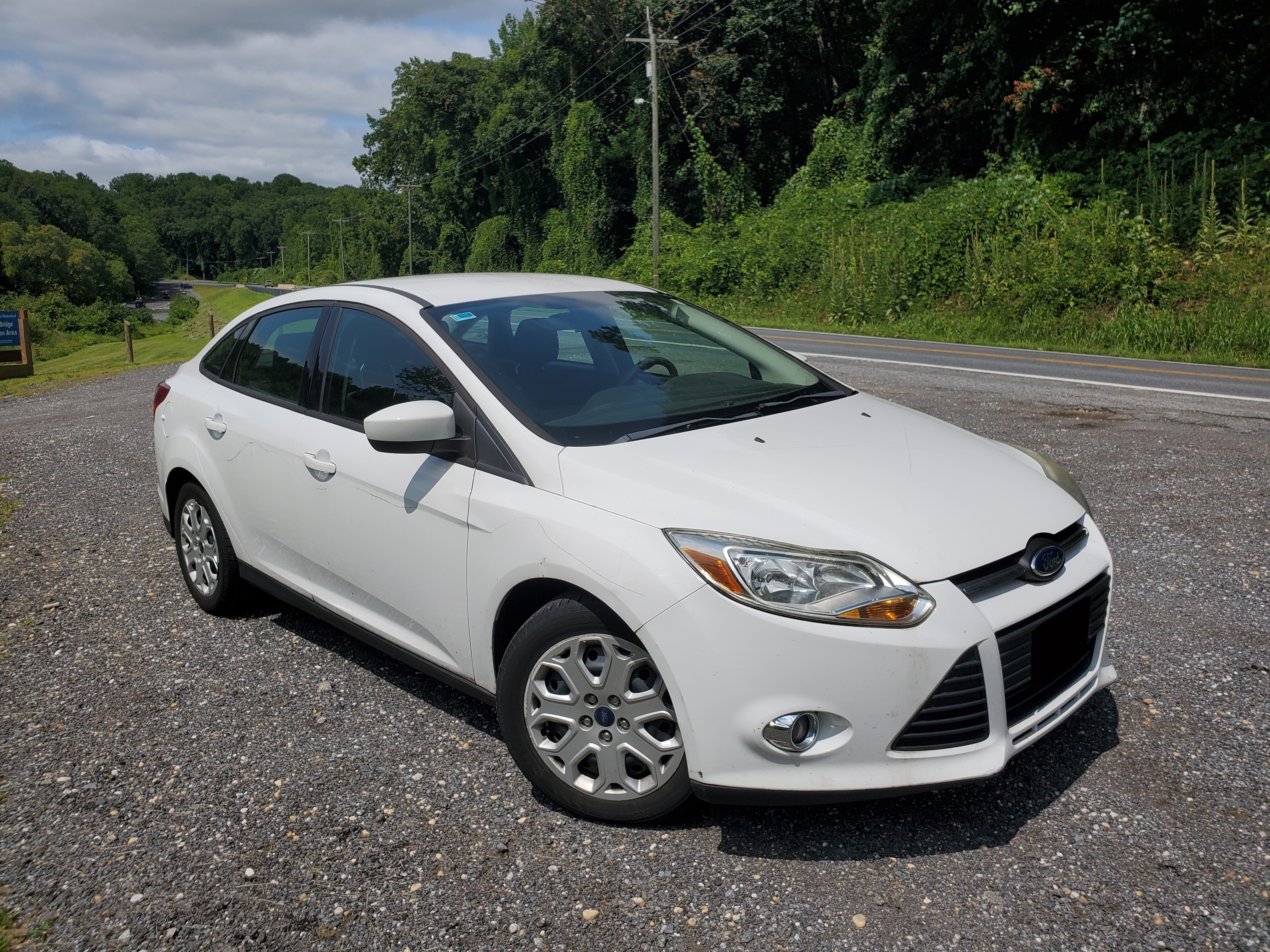
During its 20-year stay in the North American car market, the Ford Focus became a recognizable name in the compact car market as a dependable economy offering, and with the ST and RS performance variants, has achieved a reputation of remarkable performance too. However, every throne must eventually be vacated, every dynasty broken, and the Focus' reign was toppled in 2018 with the discontinuation of the third generation Focus in the United States, with Ford electing not to bring the fourth generation to the States in order to focus on crossovers and SUVs, a decision that is difficult to dispute given the popularity of those models. Discussed here is the plain-Jane, bog-standard Focus sedan.
I must confess some slight personal attachment to the Focus name; I recall that my grandmother Anne had a first generation hatchback, and as a child, I was intrigued by the remarkable simplicity of its design, clean, curvilinear shapes that stood out from the rest quite remarkably. Unfortunately, but perhaps predictably, that car was slain by rust, owing to the harsh winters and humidity of coastal Massachusetts, but the name "Focus" was planted in my mind from an early age. Of course, that is quite removed from the car under examination, which is surely a very different beast indeed.
We can start that examination by considering how strange, how unique, the original Focus looked. Does the current (for 2012) incarnation share that demeanour?

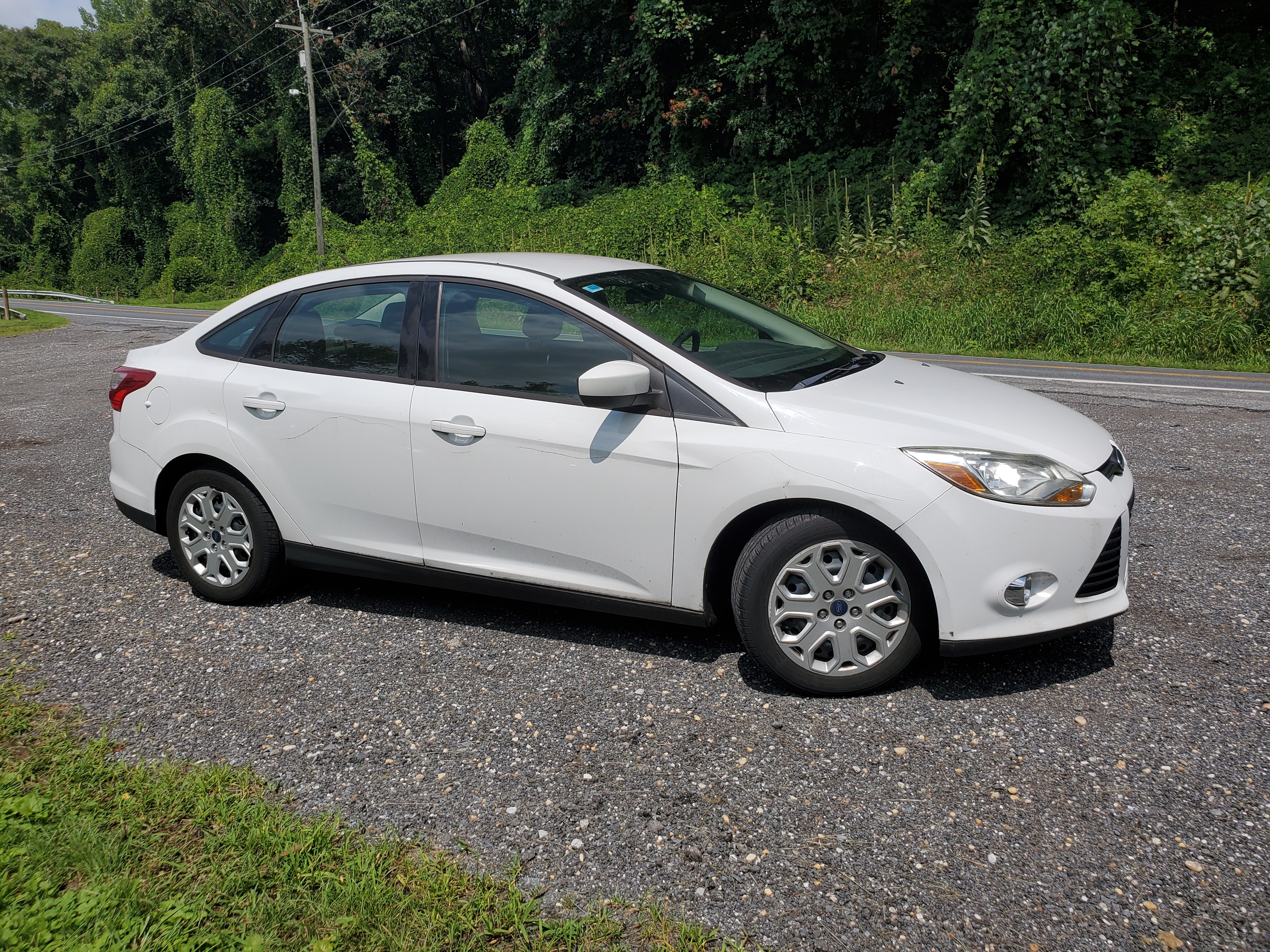
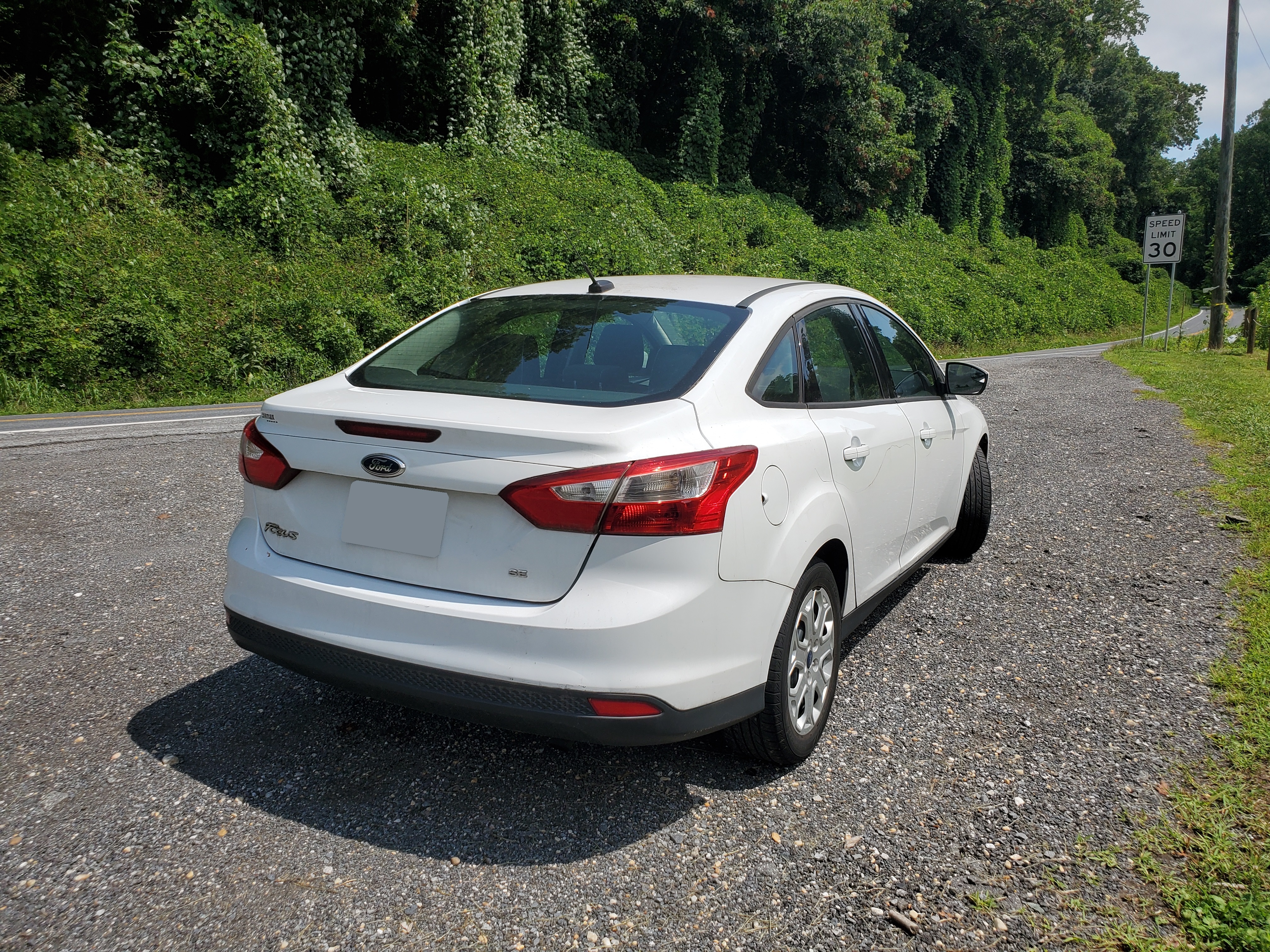
Truthfully, not really. Much has changed in the intervening decade, though perhaps the forwards-facing turn signals of the 2012 Focus could be thought of as vague references to the original's in-grille turn signals. The third generation adopts the large cabin and short rear deck that became popular with compact sedans of the 2010s, aping the eighth generation Civic's capacious cabin and deeply sloped windshield. Ford improves upon the Civic's formula with a large, hungry-looking front grille, gray lower cladding, and front and rear end treatments that almost, almost look like performance aerodynamics, the barest intimation of a front splitter here, a dainty, fleeting suggestion of a rear diffuser there. Ford applied their characteristic (for the time) curvilinear, organic treatment to the fixtures, including headlights that appear to wear eyeliner and wide, interestingly shaped taillights that stretch quite a ways up the rear quarter panel. The long, gently curved cabin roof, combined with the rounded nose and sharp, almost-Kamm rear, make for a slippery aerodynamic shape, and while such designs sometimes lead to impaired visibility (looking at you, VW CC), Ford took pains to avoid that here. The C and D pillars are narrow, and are preceded by rear quarter windows aft of the rear doors, rather than the thick C pillars that are so common with streamlined sedans, and the side view mirrors are generously sized, as well as fitted with inset convex mirrors that almost entirely eliminate the side blind spots. In fact, those side mirrors are not only easier to use than the clumsy, bizarre side view camera that 2010s Hondas fitted, they almost entirely obviate electronic blind spot warning as well. Though the Focus sedan doesn't necessarily stand out in a crowd, the subtleties of its exterior design betray a certain care for the user experience that not every car can boast of.

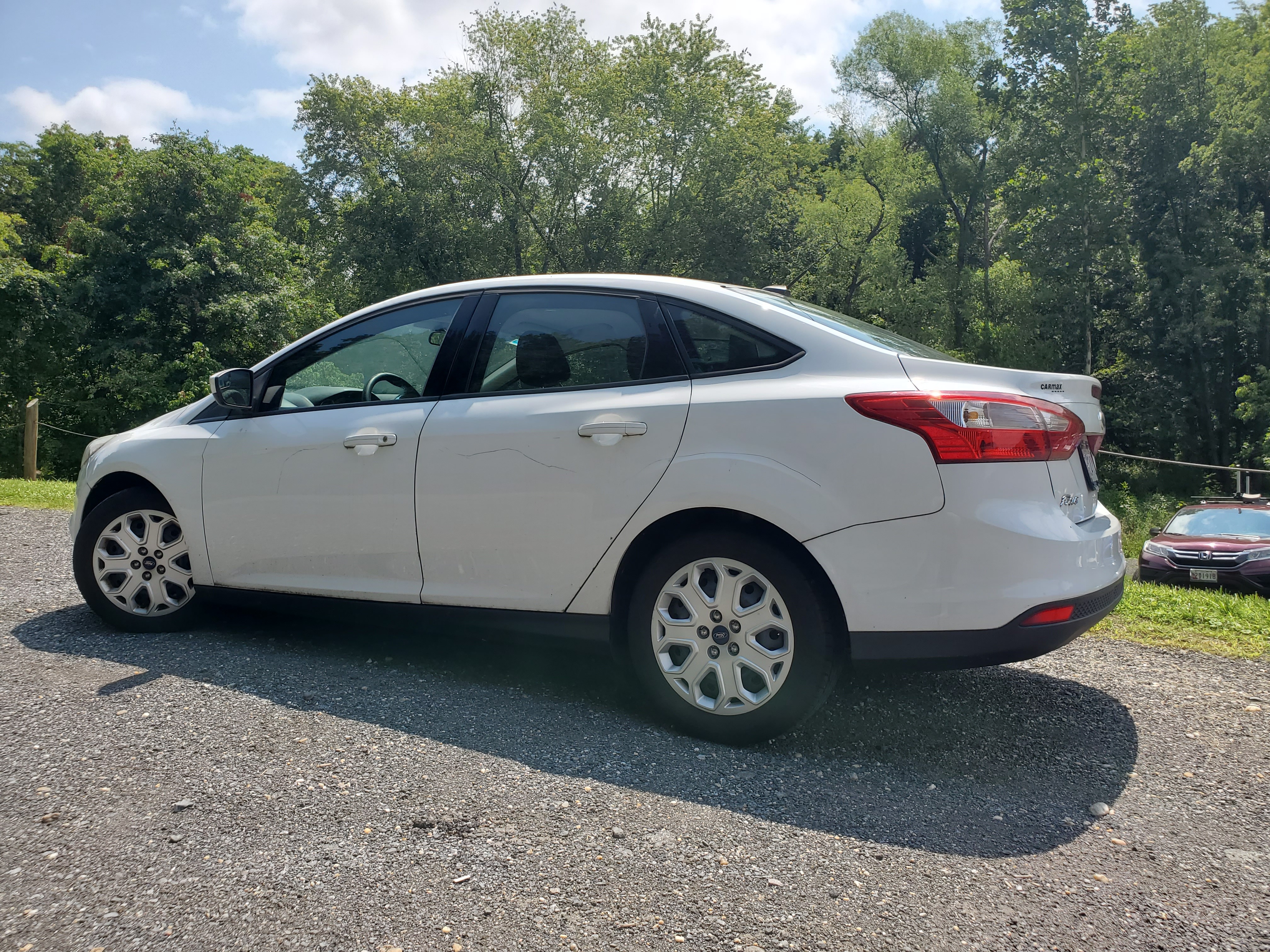
The Focus' exterior seems to be thoughtfully crafted, if simple, and the interior reflects this in some ways, but that comes with some caveats. For one, the cabin is actually quite cramped, despite the amount of room in the vehicle that is devoted to it. The center console is deep and tall, and its mass isn't broken up by any central storage bins; rather, it is simply a monolithic mass that extends from the armrest all the way up to the dashboard. In fact, the rest of the cockpit is quite cramped too, with deeply contoured door panels and dashboard surfaces that, while presenting a visually interesting environment (again, with Ford's penchant for organic, curvy designs), simply intrude upon passenger space, as does the strangely shallow footwell. For their part, the seats are comfortable and supportive, with ample back and side support due to effective cushions and tight side bolsters. However, the rear seats don't exactly share this; they are shallowly padded, with wide, mostly un-contoured surfaces that seem to be more concerned with their ability to seat three rear passengers than fit just two comfortably, with the option of a third. Rear leg room is cramped, and headroom is too, despite the roof design. Though the roof looks as though it is meant to maximize passenger room while looking stylish, like the 2019 Altima's contours, it seems like a purely aerodynamic decision, and anyone taller than 5'10" will be guaranteed to bump their head and knees multiple times.
In terms of gimmicks, the interior is simply appointed, with a relatively standard stereo unit that is replaced by a more sophisticated infotainment systems in higher trims. This is commensurate with the rest of the cockpit; the gauge cluster is comparably typical for the time, with analog dials (with blue lighting! Thanks Ford!) along with a rudimentary multifunction display that tracks little more than mileage, fuel economy, and ambient temperature.



Most of the controls are logically laid out, and the steering wheel buttons are easy enough to use, as is the light control cluster to the left of the steering column, though the plastics certainly feel aged in 2021. The steering wheel itself feels slightly odd; it was designed with just one or two driving styles in mind, with thumb notches just around 9 and 3, as well as large pads above them, and thickly built lower spokes that feel like they were designed to be gripped for the drivers who like their hands at the bottom of the wheel. Ford designed around these driving positions aggressively enough, however, that for anything other than "have your hands in your lap" or "have your hands directly at 9 and 3", the steering wheel feels quite awkward. Steering feel, however, is stiffer and more responsive than many cars newer than this. The electric power steering is well-weighted and makes the front end feel responsive, while simultaneously isolating the driver from much of the road harshness. Notably, the driver finds that they don't have to actively fight unwanted steering inputs from potholes and ruts; rather, the power steering eliminates these forces at the rack, rather than applying torque to the steering column. This is a major improvement for driver effort, though it obviously compromises the driver's perception of the road surface and the condition of the front wheels.
The Focus handles quite well, and once again, Ford shows off their chassis design chops when the roads get twisty. The front end turns in responsively, if not eagerly, and the car shifts its weight confidently, aided by a multilink rear suspension system that is quite sophisticated for this segment and era. Body roll is well controlled, and though grip is limited by the economy tires, the car makes good use of it, and the driver doesn't often feel like they have too little of it. The suspension is also more strongly damped than one might expect, resulting in a road-hugging ride that is neither too bouncy nor too firm. The car is also stable enough during hard braking, and hard braking is something the driver will see a lot until they get used to the very sensitive brake pedal, which, while good for emergency stops, makes slight speed adjustments just that little bit more difficult. Noise, vibration, and harshness isolation is decent, but not remarkably good; while wind noise is muted, road noise comes through strongly.
Another muted sound in the cabin is that of the engine, a 2.0 liter direct injected unit, which springs to life with little more than a soft growl, and is hardly audible at all until the driver really starts to bury the go pedal. This engine delivers 160 horsepower and 146 pound-feet, respectable numbers indeed for a compact sedan, and enough to get the Focus up to highway speeds faster than the typical economy sedan. The engine puts its power down through a six-speed automatic gearbox, and in the base models, the driver isn't afforded any kind of manual mode or overdrive control. The only options the driver is afforded to alter the shift behavior are a low gear and a "hill descent" switch which doesn't deactivate overdrive gears, or do much of anything...until the driver starts braking, at which point the transmission downshifts sooner to provide engine braking. While higher trims replace the hill switch with a miserable little manumatic rocker switch, Ford has enough confidence in their shift programming that the base models aren't afforded this. To their credit, the transmission programming is quite good; the transmission doesn't often hunt for gears, and will gladly let the engine rev out to 6000 rpm if the driver floors it. A "sport" mode would be appreciated, to allow the driver to bias the shift program towards improved engine response and engine braking at all times, as many cars have, but Ford clearly felt that was unnecessary. This is further demonstrated by the fact that, rather curiously, the driver is required to press the interlock trigger on the shifter to shift out of Drive either into Neutral or Low; some cars allow the driver to shift to neutral without depressing the interlock, preventing them from overshooting neutral and shifting to reverse, but Ford obviously was of the mind that the driver should put the car in drive and leave it there no matter what. Despite these caveats, however, the powertrain delivers not only impressive fuel economy, but above-average power and acceleration, though the options afforded the driver are slim enough that they feel constrained in performance driving scenarios.

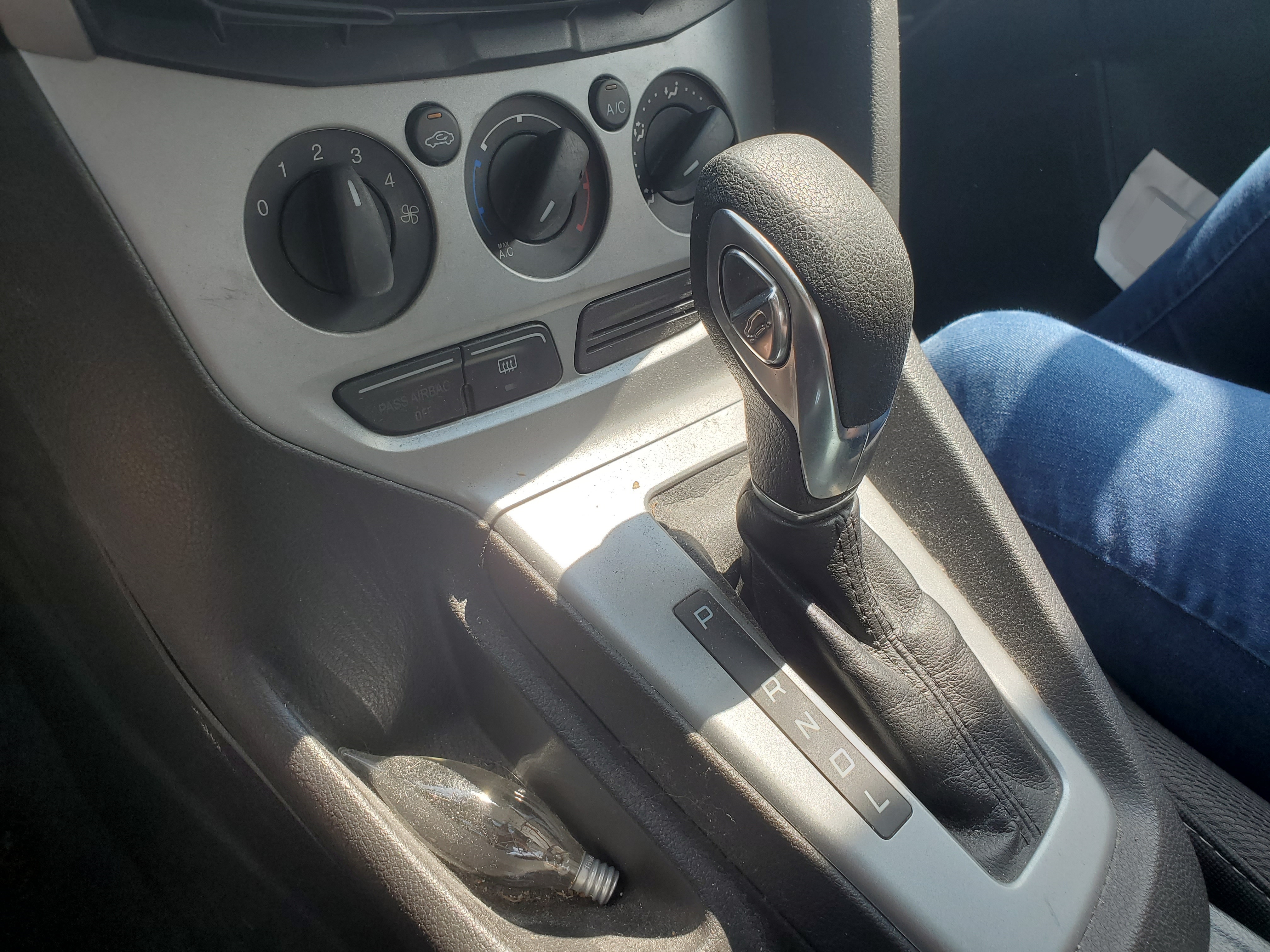
Ultimately, the Ford Focus is a car that certainly exhibits polish, whose design demonstrates care and attention, but not in the way one might immediately inspect. There is no delicate leather stitching on the interior, no hyper-streamlined UI or sophisticated, high-performance powertrain. Instead, the driver finds a welcoming and accessible, but uncomplicated environment, where they are insulated from the passive rigours of driving by the power steering, the powertrain, the ride and handling, the remarkable visibility.
"But wait," you say (or don't), "What about the cramped cabin, the low ceiling, the shallow footwells, the paltry rear seats? Surely those demonstrate a lack of attention to detail!"
But do they? Are they something that was accidentally overlooked? Or are they something that was deliberately de-prioritized, in favor of other aspects? I am inclined to guess that the latter is actually the case. Consider the low effort driver experience the car cultivates, the impressive fuel economy, the easy road manners; this is a great commuter car. The average commuter car only needs to carry one or two people, so why not devote more of the cabin space to the front seats? If the rear seats are to be seldom occupied, then there's no reason not to compromise their space, and if the rear seats are occupied at all, then the car is quite full, at which point a less contoured, more bench-like rear seat is preferable anyways. Much like the Toyota Prius Prime was a car designed around a concept, a single use paradigm, the concept of the Green American Dream, the Focus is also very much a Concept Car, not in the auto show design demonstrator sense, but in the "concept album" sense, a text that is formulated for a specific interpretation, a specific use case. With the Focus, Ford internalized that private cars are public policy. This sounds like an oxymoron, but consider how much infrastructure funding, how much planning effort and land use goes to car-oriented development and zoning, to improving and building roads and parking infrastructure. Cars aren't just private vehicles, they're public transportation policy, whose operating costs have been partially outsourced to the user through the massive financial organ that is auto loans, the auto insurance industry, the massive car maintenance industry (oil change places, tire shops, auto glass places, dealerships that charge you $600 for a transmission fluid change). Cars are transportation policy, and cars are transportation infrastructure. The Focus represents the zenith of this concept, a car entirely designed around the mindless everyday commute, to the point that, despite the fact it's a sedan that seats five, it compromises its use as a family car. Outside of the context of this design thesis, this use case, the Focus seems like a slightly lackluster sedan, cramped and odd, but in this one scenario, it is in fact frightfully logical. It's a pity there aren't more cars that are so brazen, so forceful with their purposes.